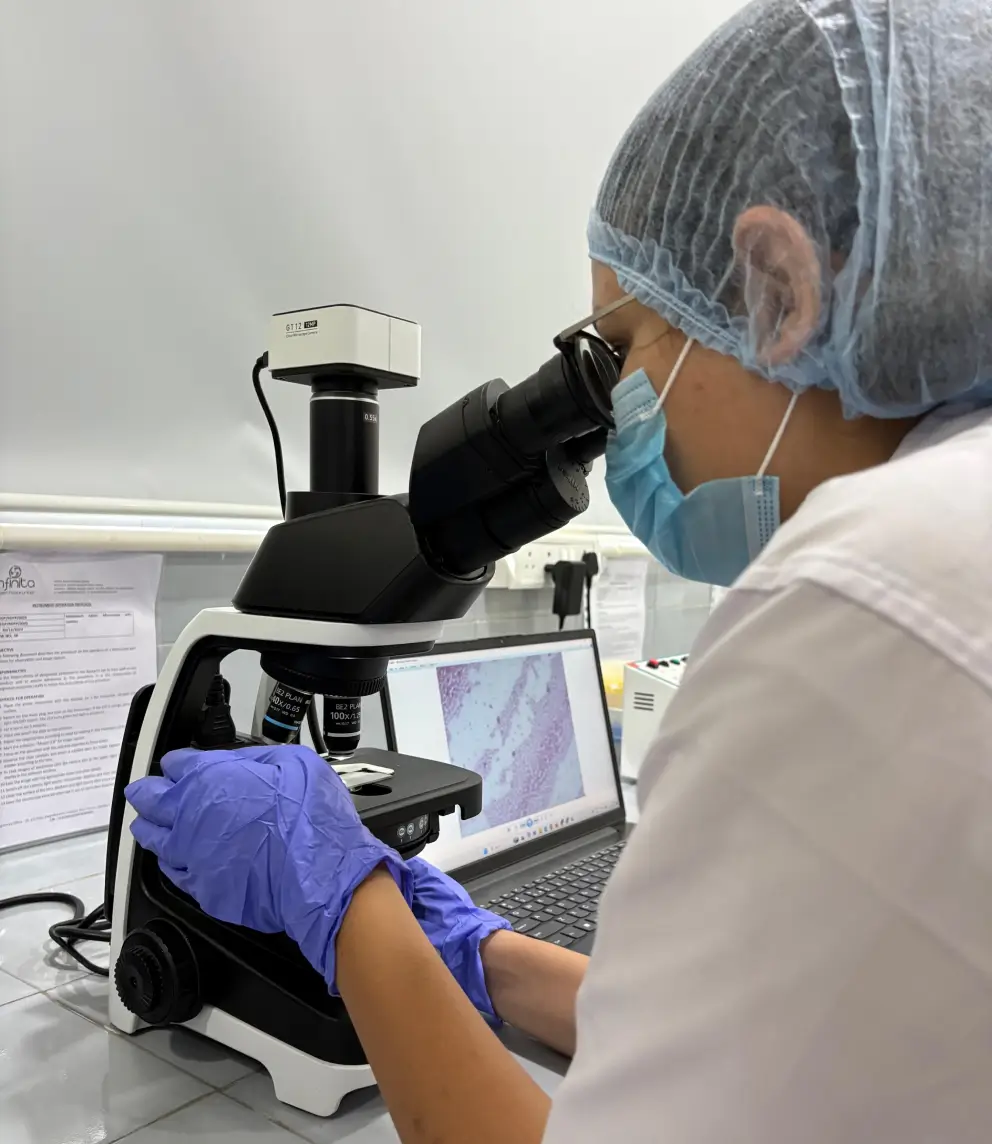Top 4 Properties Of Enzymes
Introduction:
Enzymes are biocatalysts of protein in nature, which accelerate the rate of biochemical reactions but do not affect the nature of final product. Like catalyst the enzymes regulate the speed and specificity of reaction without being used up but unlike catalysts enzymes are produced by the living cells only. Like catalysts enzymes also influence the rate of biochemical reaction so that they can take place at a relatively low temperature. Thus the enzymes are known to lower the activation energy. In many cases enzymes initiate the biological reaction.
The term enzymes are derived from Greek word enzymes which means ‘in yeast’ because the yeast cells were first to reveal the enzyme activity in living organisms. The term enzyme was coined by W. Kuhne in the year 1878.
Properties Of Enzymes Can Be Classified Into:
- Physical properties
- Chemical Properties
- General properties
Physical Properties of Enzymes
- Physically enzymes behave as colloids or as substance of high molecular weight.
- Enzymes are destroyed or inactivated at temperature below the boiling point of water.
- At 60 degrees Celsius most enzymes in liquid medium are inactivated.
- Dried enzymes extract can endure temperature 100 degree Celsius to 120 degrees Celsius or even higher. Thus enzymes are thermos-labile.
- There is always a specific temperature of optimum activity of every enzyme, which usually ranges from 25 degrees Celsius to 45 degrees Celsius. Enzymatic action is highest at 37 degrees Celsius and enzymes become inactive when temperature rises above 60 degrees Celsius.
Chemical Properties Of Enzymes
- Catalytic properties: Enzymes are biological catalyst. The small quantity of enzymes catalyses the larger quantities of substances. It means, enzymes have high capability to convert giant quantities of substrate into product. Enzymes increase the rate of reaction and remain unaffected by the reaction which they catalyse.
- Specificity of enzyme: Enzymes are highly specific in nature, i.e., a particular enzyme can catalyse a particular reaction. For example, Enzyme sucrase can catalyse only hydrolysis of sucrose.
General Properties Of Enzymes
- Enzymes initiate and accelerate the rate of biochemical reaction.
- The activity of enzymes depends upon the acidity of medium (pH specific). Each catalyst is most active at a specific pH. For example, pH 2 for pepsin, pH 8.5 for trypsin. Most intracellular enzymes function at near neutral pH.
- Enzymes can accelerate the reaction in either direction.
- All enzymes possess active sites which participate in the biochemical reactions.
- Enzymes are very unstable compounds mostly soluble in water, dilute glycerol, NaCl and dilute alcohol.
- Enzymes act actively at optimum temperature.
- All enzymes are protein in nature but all proteins may not be an enzyme.
- Enzymes lower the energy of activation of the substance molecule so the biochemical reaction can take place at normal body temperature which is 37 degrees Celsius.
Chemical Nature of Enzymes
All enzymes are proteins, however all proteins are not enzymes. However, there are some conjugated enzymes with a non-protein moiety attached to the protein part of enzyme, which is called Apo enzyme. The non-protein part is known as co factor. If the co factor is of inorganic nature like potassium calcium, magnesium, manganese it is known as prosthetic group. Prosthetic group is generally tightly bound to the protein part of enzyme and it is difficult to separate it with simple method like diffusion. The enzyme with prosthetic group and Apo enzyme is called holoenzyme.
If co factor attached to an enzyme protein is organic moiety like NADP, NAD, FAD, etc , it is called coenzyme. A co enzyme is generally loosely bound to Apo enzyme and can easily be separated than prosthetic group. Co enzymes are heat resistant also.
Difference between Apo enzyme and co-factor:
- Apo enzyme is protein part of enzyme hence a macromolecule whereas co factor is the non protein part of enzyme hence a micro molecule.
- Apo enzyme is an enzyme which acts only in presence of a co-factor whereas co-factor may be metal ion or a complex organic compound makes an Apo enzyme functional.
- Apo enzyme is thermo-labile whereas co-factor is thermostable.
- Apo enzyme conducts enzymatic activities whereas co-factor moulds the enzyme or co enzyme or carries the groups removed from the substrate.
- Apo enzyme is specific for an enzyme system whereas co-factor work with many enzymes.
The Most Important Properties Of An Enzyme Are:
- Catalytic Property
- Specificity
- Reversibility
- Sensitiveness to heat and temperature and pH
Catalytic Property:
Enzymes have extra-ordinary catalytic power. They are active in very small quantities. A small amount of enzyme is enough to convert a large quantity of substrate. The enzymes remain unchanged after the reaction. The turnover number of enzymes ranges from 0.5 to 600000. Turn over number is the number of substrate molecules converted by one molecule of enzymes per second when its active site is saturated with substrate.
Specificity:
Enzymes are very specific in their action. Particular enzymes act on particular substrates only. Enzymes are also specific to a particular type of reaction. In some rare cases, the specificity may not be too strong. Enzymes show different types of specificity as follows:
- Bond Specificity: It is also called as relative specificity. Here the enzymes are specific for a bond. eg; peptidase is specific or peptide bond, lipase is specific for ester bond in a lipid.
- Group Specificity: It is also called structural specificity. Here the enzymes are specific for a group. eg; pepsin hydrolyse the peptide bonds in with the amino group belongs to aromatic amino acids.
- Substrate Specificity: It is also called absolute specificity. Here the enzyme acts only on a particular substrate. eg; arginase acts only on arginine; carbonic anhydrase acts only on carbonic acid.
- Optical Specificity: It is also called stereo-specificity. This is the highest specificity shown by an enzyme. Here the enzymes are specific not only to the substrate but also to its optical configuration. e.g. L amino acid oxidase acts only L-amino acids, not on D-amino acids. Similarly, the alpha-amylase act only on alpha-14 glycosidic linkage of starch and glycogen. It is not able to hydrolyse the beta-14 glycosidic linkage of cellulose.
- Co-factor Specificity: This shows that enzymes are not only specific to the substrate but also specific to its co-factors.
- Geometric Specificity: Here the specificity is very less. Some enzymes will work with a small range of similar substrates having similar structural geometry. e.g. alcohol dehydrogenase can oxidise methanol and n-propanol to aldehydes.
Reversibility:
Most of the enzymes catalysed reactions are reversible. The reversibility of the reaction depends upon the requirements of the cell. In some cases, there are separate enzymes for forward and reverse reaction. Some enzyme-catalysed reactions are not reversible.
Sensitivity To Heat, Temperature And pH:
Enzymes are very sensitive to heat and temperature. They are thermolabile. The maximum activity of Associate in Nursing protein is at traditional temperature. The correct temperature for the utmost activity is termed optimum temperature. Enzymes will be inactive at very low temperatures; this is the reason for preserving food and vegetables in the refrigerator. The enzymatic activity increases with the increase in temperature up to a certain level. At higher temperature (60-70 degree Celsius), the enzyme is destroyed or denatured. Do you know an enzymes active at very high temperature? It is Taq-Polymerase used in PCR reactions. The optimum temperature for it is 75 to 80 degrees Celsius.
The optimum pH of most endo-enzyme is pH 7.0 (neutral pH). However, digestive enzymes can function at different pH. For example, salivary amylase act best at pH 6.8, pepsin act best at pH2 etc. Any fluctuation in pH scale from the optimum causes ionization of R-groups of amino acids that decrease the protein activity. Sometime a change in pH causes the reverse reaction, e.g. at pH 7.0 phosphorylase break down starch into glucose 1- phosphate while at pH5 the reverse reaction occurs.







